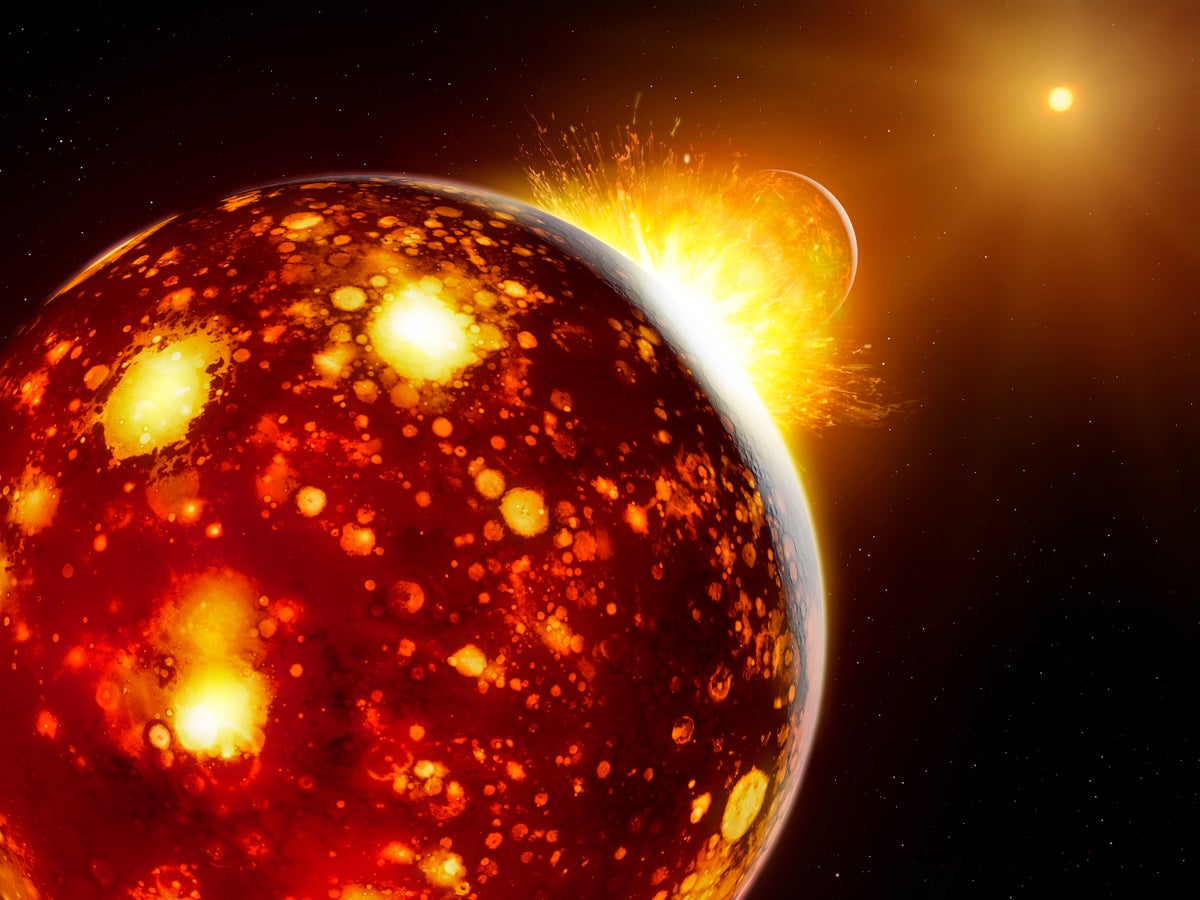Approximately four and a half billion years ago, a colossal collision occurred between the early Earth and a planetary body known as Theia. This cataclysmic impact not only obliterated Theia but also melted significant portions of Earth's mantle and propelled an enormous disk of debris into orbit around Earth. Over time, this debris coalesced to form the Moon. While this giant impact hypothesis has long been accepted as the primary explanation for the Moon’s origin, key questions remained unanswered—particularly regarding Theia’s composition and its place of origin within the solar system. A new study, published in Science in November 2025, provides compelling evidence that Theia was a rocky planet formed in the inner solar system, close to the Sun and near Earth’s own orbit.
The original giant impact model, first proposed in the 1970s, suggested that the Moon was primarily made from the material of the impacting body, Theia. Under this assumption, scientists expected the Moon’s chemical composition to differ noticeably from that of Earth, reflecting the distinct origins of the two bodies. However, subsequent research revealed that the Earth and Moon share remarkably similar chemical compositions—so similar, in fact, that they are far more alike than two separate planetary bodies should be. This puzzling similarity challenged earlier assumptions and suggested that either the Moon formed differently than initially thought or that Theia itself was compositionally very similar to Earth.
In the new study, researchers led by Thorsten Kleine, director at the Max Planck Institute for Solar System Research in Göttingen, Germany, took a fresh approach by examining specific elements in the Earth-Moon system that Theia would have contributed during the giant impact, beyond just the bulk of the Moon’s material. They focused on heavy elements such as molybdenum and iron, which have distinctive isotope signatures that can act as tracers to reveal a planetary body's history and origin.
Understanding the distribution of these elements is crucial because, during planetary differentiation, heavy elements like iron tend to sink into a planet’s core, leaving the mantle depleted of these metals. Therefore, the presence of iron in Earth’s mantle that cannot be accounted for by Earth’s own formation processes likely originated from Theia during the impact. By analyzing isotope ratios—variations in the number of neutrons within atoms of the same element—in iron and molybdenum from both terrestrial rocks and lunar samples, the researchers sought to reconstruct the nature and origin of Theia.
To carry out this analysis, Kleine and his team studied 15 terrestrial rock samples alongside six lunar samples collected during the Apollo missions. They employed highly precise measurements of iron isotopes, focusing on subtle anomalies in their distribution that recent research has shown can reveal the sample’s place of origin within the solar system. These iron isotope anomalies are difficult to detect due to their minute variations, which is why they had not been extensively studied in lunar samples before.
In addition to iron, the team examined molybdenum and zirconium isotope distributions within the same samples. Molybdenum, in particular, is a heavy element whose abundance varies depending on where a planetary body formed in the solar system. Previous work by Kleine and colleagues demonstrated that planets and asteroids forming closer to the Sun tend to be richer in heavy elements like molybdenum. By comparing isotope data from Earth and Moon samples with those from 20 meteorites originating from both the inner and outer solar system, the researchers aimed to pinpoint where Theia had formed.
Their findings indicate that Theia was a rocky planet with a metallic core, possessing approximately five to ten percent of Earth’s mass. Crucially, the isotope signatures suggest that Theia formed in the inner solar system, closer to the Sun than Earth itself. This result supports earlier hypotheses that Theia and Earth were compositionally similar because they originated in proximate regions of the solar system. However, the new study offers the first direct evidence pinpointing Theia’s formation zone with greater precision.
Kleine explains that Earth appears to contain slightly more molybdenum and zirconium than expected based on its own formation. The logical conclusion is that these additional heavy elements were delivered during the Theia impact, further confirming Theia’s inner solar system origins. Combining this chemical evidence with the iron isotope data provides a coherent picture of Theia as a planetary neighbor to the early Earth rather than a more distant or exotic object.
The research has broader implications beyond just understanding Theia’s origin. Planetary scientist Sara Russell,

